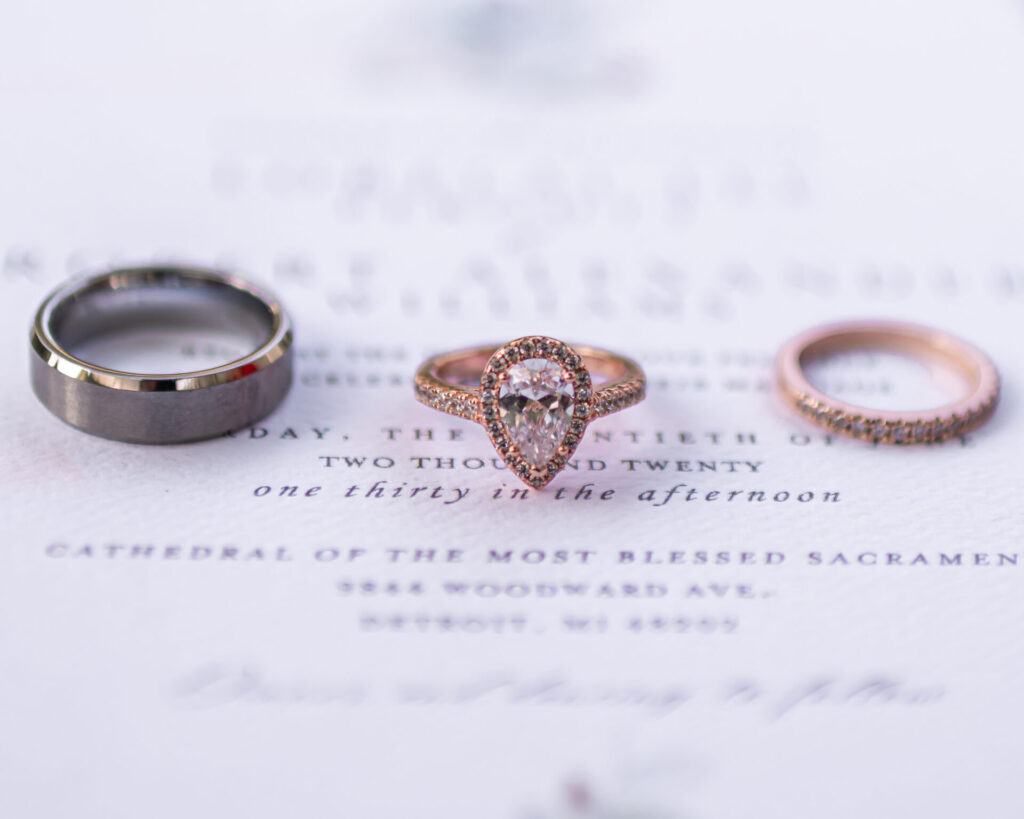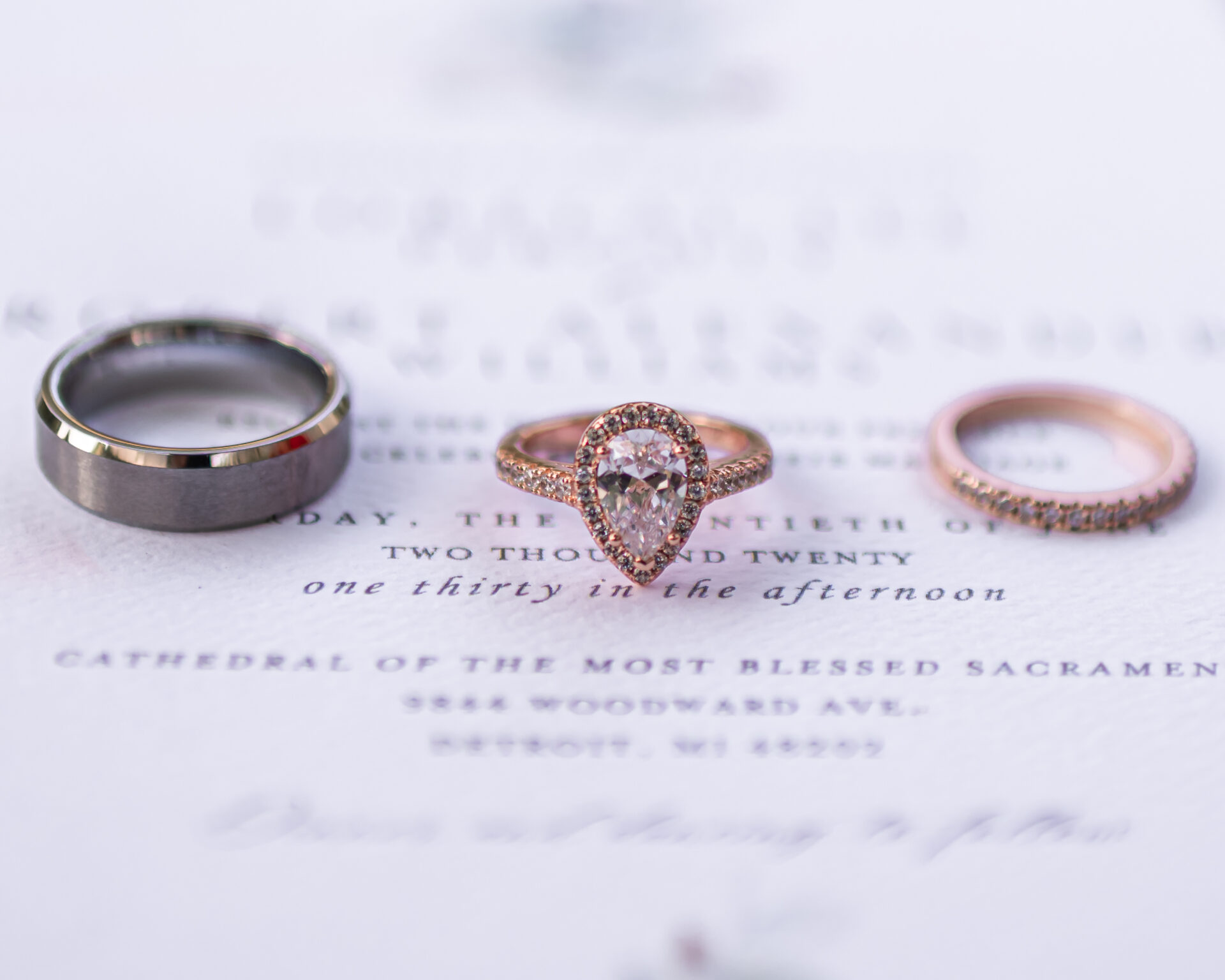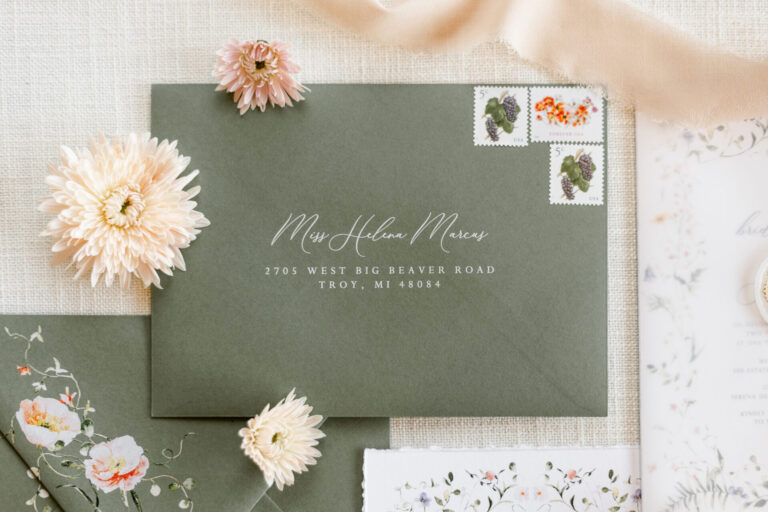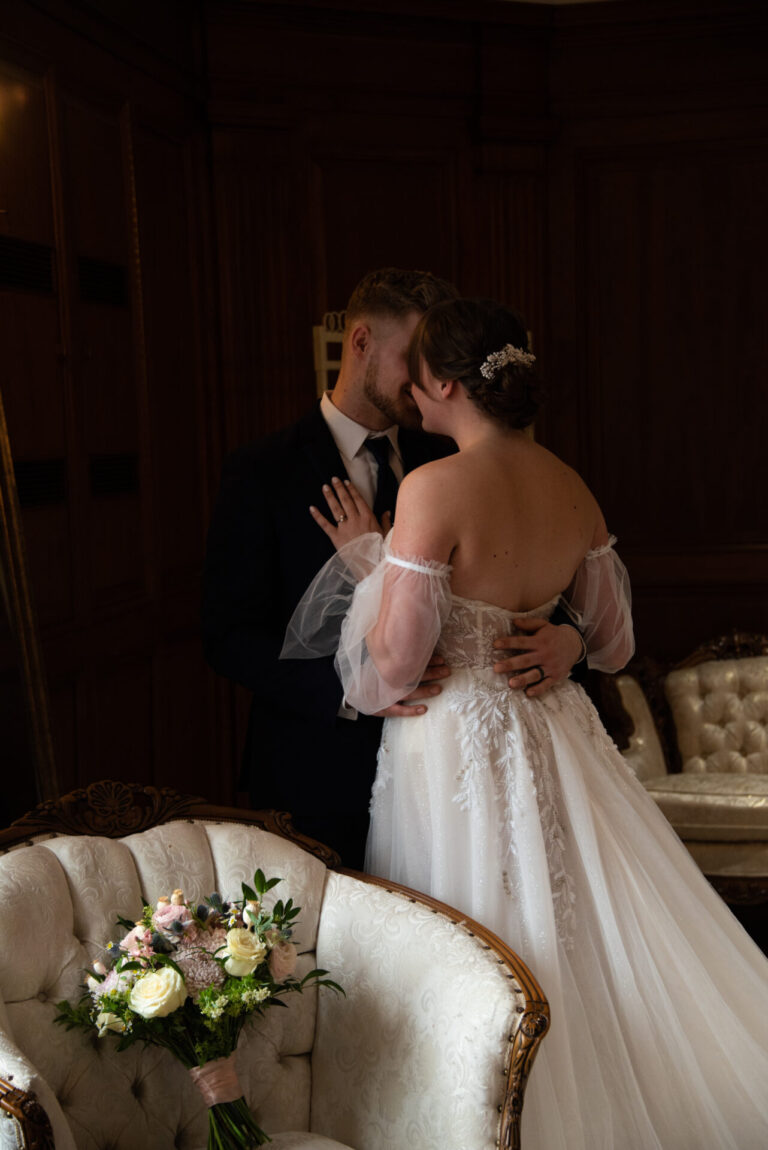How to Word Your Wedding Invitations: Etiquette, Examples, and Tips
Your wedding invitation is one of the first glimpses your guests will have of your big day. Not only does it set the tone, but it also conveys essential details. Crafting the perfect invitation involves more than just selecting a beautiful design—it requires following wedding invitation wording etiquette to ensure that clarity and formality (or informality) are communicated properly.
In this guide, we’ll discuss how to word each section of your invitation, from the host line to the dress code, ensuring that each part aligns with your wedding’s style. Additionally, you’ll find specific examples for various hosting scenarios, whether the bride’s parents are hosting, both sets of parents, the couple, or divorced parents.

The Host Line: Who is Hosting the Wedding?
The host line is typically the first part of a wedding invitation. It indicates who is hosting or paying for the wedding, and traditionally, this is the bride’s parents. However, modern weddings often involve both sets of parents, the couple, or a combination. The wording you choose here should reflect the hosting arrangement, helping to set the tone right from the start.
Formal Wording Examples
- Bride’s parents hosting:
“Mr. and Mrs. Jonathan Davis request the honor of your presence…” - Both sets of parents hosting:
“Mr. and Mrs. John Smith and Mr. and Mrs. Robert Johnson request the honor of your presence…” - Couple hosting:
“Emma Marie Smith and Liam James Turner invite you to celebrate with them…” - Divorced parents:
“Mr. John Smith and Mrs. Mary Green request the honor of your presence…”
Using the right host line sets the tone of your invitation and, in turn, the style of your wedding.
The Request Line: Inviting Guests to Attend
Once you’ve established the host, the next line is where you invite your guests to join you. Known as the request line, this varies according to the wedding’s formality and whether it’s a religious or secular ceremony.
Formal (Religious):
“Request the honor of your presence…” (Honor is spelled with a ‘u’ in formal contexts.)
Formal (Secular):
“Request the pleasure of your company…”
Casual Wording:
“Would love for you to join us as we celebrate…”
This line helps communicate the event’s formality. As you move between formal and casual wording options, you can let guests know what type of atmosphere to expect.
Naming the Couple: Formality vs. Modern Style
Traditionally, formal invitations list the bride’s name first, followed by the groom’s. For same-sex couples, names are often listed alphabetically or in the order that feels most natural to them. However, casual or modern weddings sometimes use only first names.
Formal Example:
“Emma Marie Smith and Liam James Turner…”
Casual Example:
“Join Emma & Liam as they celebrate their special day…”
Selecting the right tone here sets the stage for the rest of your invitation, letting guests know whether to expect a formal affair or a laid-back celebration.
Writing the Date and Time on Your Invitation
The date and time on your invitation should reflect your wedding’s level of formality. Typically, formal events spell out the date fully, while casual weddings allow for numerals.
Formal Date:
“Saturday, the twenty-fifth of May, two thousand and twenty-four”
Casual Date:
“Saturday, May 25, 2024”
Formal Time:
“At five o’clock in the evening”
Casual Time:
“5:00 PM” or “5:30 PM”
For a polished look, avoid abbreviations like “Sat.” or “Sun.” to maintain a professional tone.
Ceremony and Reception Locations: Providing Essential Details
Including the ceremony and reception locations on your invitation is essential. Generally, formal invitations provide the full address, while casual events may simplify the location details.
Formal Location:
“St. Mary’s Cathedral, 1234 Main Street, Anytown, State”
Casual Location:
“The Barn on Maple, Anytown”
If the ceremony and reception are at the same location, you can simply add “Reception to follow” to save space.
Dress Code and Attire Etiquette for Invitations
Adding dress code information helps guests prepare properly. For formal weddings, it’s common to specify if black-tie or cocktail attire is expected. Including this detail ensures that guests arrive dressed appropriately.
Formal Example:
“Black tie” or “Black tie optional”
Casual Example:
“Dressy casual” or “Garden party attire”
Aligning your dress code with the formality of your event ensures guests feel comfortable and well-prepared.
Examples of Wording for Different Hosting Scenarios
Now, let’s look at specific examples of wording for different hosting scenarios. Whether it’s a traditional arrangement, a couple-hosted celebration, or an event involving divorced parents, these examples provide clarity and inspiration for your wording.
1. Parents Hosting (Formal)
“Mr. and Mrs. John Smith request the honour of your presence at the marriage of their daughter Emily Jane to Michael Andrew Johnson on Saturday, the twenty-fifth of May two thousand and twenty-four at five o’clock in the evening at The Grand Ballroom, New York, New York.”
2. Parents Hosting (Casual)
“John and Mary Smith invite you to celebrate the marriage of their daughter Emily to Michael Johnson Saturday, May 25, 2024, at 5:00 PM at The Grand Ballroom, New York, New York.”
3. Couple Hosting (Formal)
“Together with their families, Emily Jane Smith and Michael Andrew Johnson request the honour of your presence at their marriage Saturday, the twenty-fifth of May two thousand and twenty-four at five o’clock in the evening at The Grand Ballroom, New York, New York.”
4. Couple Hosting (Casual)
“Please join us to celebrate the marriage of Emily Smith and Michael Johnson on Saturday, May 25, 2024, at 5:00 PM at The Grand Ballroom, New York, New York.”
5. Both Sets of Parents Hosting (Formal)
“Mr. and Mrs. John Smith and Mr. and Mrs. Robert Johnson request the honour of your presence at the marriage of their children Emily Jane and Michael Andrew on Saturday, the twenty-fifth of May two thousand and twenty-four at five o’clock in the evening at The Grand Ballroom, New York, New York.”
6. Both Sets of Parents Hosting (Casual)
“Together with their parents, Emily Smith and Michael Johnson invite you to celebrate their wedding on Saturday, May 25, 2024, at 5:00 PM at The Grand Ballroom, New York, New York.”
7. Divorced Parents (Formal)
“Mr. John Smith and Mrs. Mary Green request the honour of your presence at the marriage of their daughter Emily Jane to Michael Andrew Johnson on Saturday, the twenty-fifth of May two thousand and twenty-four at five o’clock in the evening at The Grand Ballroom, New York, New York.”
8. Divorced Parents (Casual)
“John Smith and Mary Green invite you to join the celebration of their daughter’s wedding, Emily and Michael, on Saturday, May 25, 2024, at 5:00 PM at The Grand Ballroom, New York, New York.”
Conclusion: Pulling It All Together
Understanding and applying wedding invitation wording etiquette allows you to create invitations that reflect your wedding’s style while providing guests with essential information. Whether you’re hosting traditionally, with both parents, or as a couple, these guidelines and examples will help you craft an invitation that’s clear, elegant, and uniquely yours.
By following these tips, you’ll have beautifully worded invitations that communicate everything your guests need to know while reflecting the unique style of your wedding.







